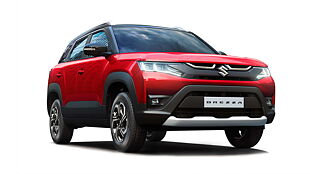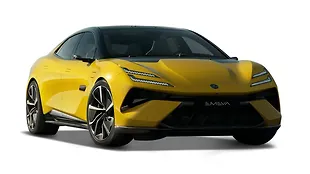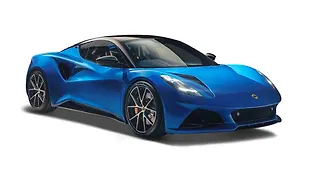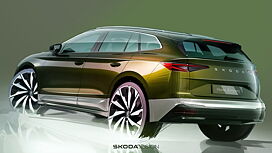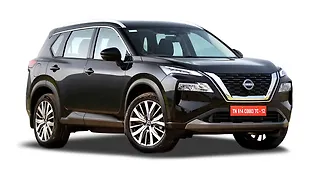
-Tested on four parameters
-Tested car gets ABS with EBD, traction control and four airbags
Nissan finally has a capable product in its stable after a long time in the form of the Magnite.And, what we loved the most about it is the engine. Now it has got the specs and technology on paper but how well does it perform in real-world conditions? To find out, we have listed down a few parameters and we will test the Magnite against those parameters.
Refinement
Acceleration
Full load
Braking

- Refinement
Our first parameter to test out is refinement and this begins with what the car sounds like when you crank the engine from off. At idle, the car settles into a thrummy vibe and you can hear much of it as it hums along in the background. What’s more, vibrations can be felt in the steering as well as the gear lever. On the Go, the clutch action feels heavy and the gear shift action feels notchy, hard with long throws which would become a task if you are driving enthusiastically.
While the insulation is just about acceptable for a car of this size and category in terms of filtering out external sounds, it’s not entirely a silent drive as you do still hear the engine clattering along with an audible whine as you slow down for a stoplight or in traffic. Getting up to three-digit speeds doesn’t take much effort despite the 1.0-litre turbo’s small size. However, the engine is quite audible at these kinds of speeds and will take some time getting used to. Moreover, the vibrations increase significantly, the faster you go.
The Magnite is underpinned by McPherson struts in front, a twin-tube telescopic setup at the rear and rides on 195/60 tyres with R16 wheels. In terms of ride quality, you can hear the suspension do its thing if you hit a pothole too hard or approach a speed breaker too fast but go with a bit of caution and it manages to absorb and dampen without sending much back into the cabin.
Rating-3/5 stars
2. Acceleration

In our next test, we are looking at the all-important acceleration figures to determine the driveability of the engine. Now let’s be clear, the outright acceleration figure, in this case, a 0-100kmph time may not seem like a large number, but it’s not the primary determinant in this test. What we want is in-gear acceleration, a true measure of driveability for this engine and gearbox combination.
First up, the Nissan Magnite completed the 0-100kmph sprint in 10.28 seconds. The equivalent Hyundai Venue with the 1.0-litre GDi turbo did the same sprint in 11.49 seconds while closer in pricing, the Maruti Suzuki Swift petrol MT did the same in 12.26 seconds. It should, however, be noted that Swift’s petrol engine is a naturally aspirated mill and also, the conditions under which the cars were tested varied as they were at different times.
Like we said earlier, hitting 100kmph is just one part of what we are looking at, what we want are in-gear acceleration figures for this 1.0-litre turbo petrol and five-speed manual gearbox. In the 20-80kmph in third gear, the Magnite completed the test in 11.08 seconds while the equally important 40-100kmph sprint in fourth gear was achieved in 15.32 seconds. Given that the first gear is extremely short, you will more often than not find yourself shifting to second if you have to make even a little progress. At city speeds, third gear is your best friend as you get access to a large chunk of the torque.
Out on the highway, the Magnite’s relatively light mass of 1041kg means the engine doesn’t have to strain to lug the car around and apart from the noticeable vibrations, the car needs a very little coaxing to constantly do your bidding at three-digit speeds.
Rating 4.5/5 stars
A full load

We also decided to see how the engine would handle a full load and decided to put four people in the car, the size of an average Indian family that would buy a car of this size and category. At city speeds and with four people in the car, very little strain was felt on the engine, however, start climbing a hill and if you haven’t built up momentum, you are going to notice the engine straining to pull the load. The clutch on the test car was quite hard with a very late bite point and this means if you have to do a hill start, the car will jump forward when you are trying to gain momentum. Its massive 205mm ground clearance means, even with a full load, the car does not bottom out.
Rating 3.5/5 stars
Braking

So it is important for the car to be bundled with safety features like traction control, ABS with EBD, but the most basic and important safety parameter is braking. As is the case with most cars in the segment, the Magnite gets discs in front and drums at the rear. It also gets ABS. But does it stop well and does it do it with confidence.
To find that out, we tested the braking capabilities of the Magnite and it did good, travelling 28.48-metres when we dropped the anchors from 80kmph and it stopped in 3.19 seconds. Under hard braking, the Magnite stopped progressively with a good initial bite but with the front end having a tendency to dive a certain amount. We were also able to navigate our way around obstacles due to the ABS kicking in quickly and freeing the wheels for easy mobility.
Rating 3.5/5 stars
Conclusion

On a 40 point scale, the Magnite scored a total of 29/40 or in percentage terms 72.5/100. Its strongest score comes from the acceleration test where it scored 4.5/5 stars. A part of this comes down to the 1.0-litre turbo petrol engine’s peppy nature where it displayed an eagerness to gain speed but also due to the lightweight nature of the car by itself. On the other end of the scale is refinement where the Magnite scored 3/5 stars. The vibrations are omnipresent and there is a noticeable road and tyre noise especially if you are on a concrete road.
It should be noted here that we assessed the Magnite relative to its segment and price bracket and in that respect, it has scored really well among the competition. Here then are the final figures for the Nissan Magnite in terms of real-word numbers.

![Nissan Magnite [2020-2024] Image Nissan Magnite [2020-2024] Image](https://imgd.aeplcdn.com/272x153/n/cw/ec/45795/magnite-exterior-right-front-three-quarter-11.jpeg?isig=0&q=80)
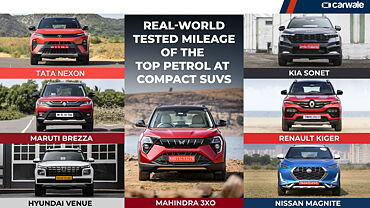
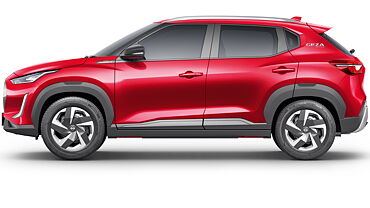
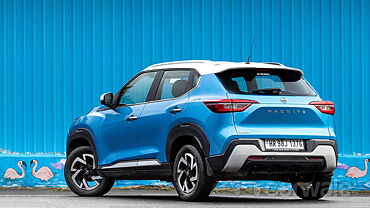
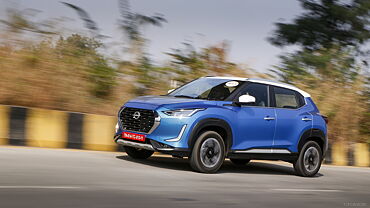






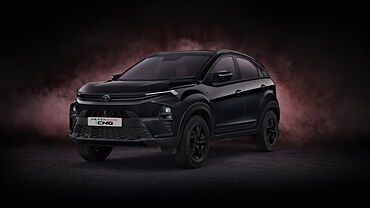



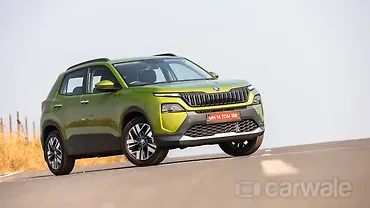
![Nissan Magnite [2020-2024] Right Front Three Quarter Nissan Magnite [2020-2024] Right Front Three Quarter](https://imgd.aeplcdn.com/199x112/n/cw/ec/45795/magnite-exterior-right-front-three-quarter-11.jpeg?isig=0&q=80)
![Nissan Magnite [2020-2024] Right Front Three Quarter Nissan Magnite [2020-2024] Right Front Three Quarter](https://imgd.aeplcdn.com/199x112/n/cw/ec/45795/magnite-exterior-right-front-three-quarter-4.jpeg?q=80)
![Nissan Magnite [2020-2024] Right Front Three Quarter Nissan Magnite [2020-2024] Right Front Three Quarter](https://imgd.aeplcdn.com/199x112/n/cw/ec/45795/magnite-exterior-right-front-three-quarter-5.jpeg?isig=0&q=80)
![Nissan Magnite [2020-2024] Dashboard Nissan Magnite [2020-2024] Dashboard](https://imgd.aeplcdn.com/199x112/n/cw/ec/45795/magnite-interior-dashboard-3.jpeg?q=80)
![Nissan Magnite [2020-2024] Steering Wheel Nissan Magnite [2020-2024] Steering Wheel](https://imgd.aeplcdn.com/468x263/n/cw/ec/45795/magnite-interior-steering-wheel-2.jpeg?q=80)







